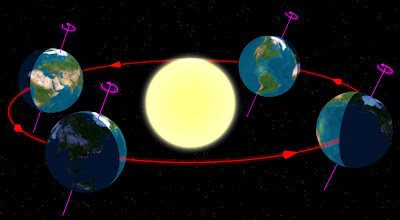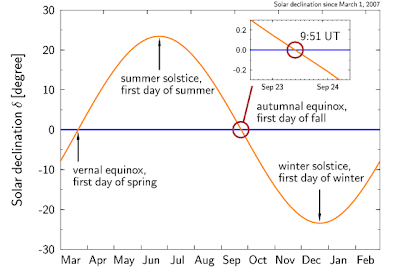| An exchange of information between the sender and receiver is the goal of a successful communication, which in most cases takes place on many levels. If my neighbor's wife is upset I can tell even without understanding the words, and if my husband had a second glass of wine he strats mingling up lettersin his emials. (Yes, you do!) |
Not all channels (phone, email, pantomime) support every form of communication. An essential part of communication is the feedback that allows the sender to find out whether a message was received (given that he is interested in finding out). The possibility for such feedback is the Web2.0's large potential. However, evolution has trained us for face-to-face communication, and the absence of this visual channel is a severe drawback. Together with a multitude of cultural and social backgrounds in the virtual community (that most often are unknown), this poses a difficulty which gets significantly enhanced by being unaware of the problem. Though there are notable efforts to make use of more communication channels on the internet [2], the written word has without doubt an enormous importance in online discussions.
| Yet how many people manage to express themselves in the written form? Do I? How many people actually try to find out the message that a writer had? How efficiently can one do this without knowing the person, at least from reading more than a paragraph? If I look around me, I see a lot of people sending out badly encoded information that, if received, is never decoded. It's a failure on both sides. |
Of course, most of our communication is casual and has not a high information density. Many of our daily exchanges have simple meta messages, like: small talk to make somebody feel comfortable, listening to stories we already know just to be polite, or asking the same question again even though nothing can be added to it (some call it research). This however relies on a shared social understanding (your way to be polite might be my way to be insulting) - a 'common' ground, that occasionally needs to be confirmed.
Unfortunately, today we also have to deal (... new email...) with an increasing amount of background noise (... haven't I already refereed that paper?...) that is as distracting (... seminar in five minutes, do I finish this post? ...) as annoying (... can I drop in around 3pm?...). Our attention span (... I think I misunderstood him, does that matter?...) is getting increasingly shorter (... was that already the hard deadline? ...). It takes patience to understand (...yes, I got your email, but I don't have time...), and in a world where being hot is cool (... can I call back later, I'm somewhat short on time...) and being busy makes you look important (... no time...), being connected is (...no time...) just another icon (...time...) in the (...time...) sidebar (...time... time... time...).
Hence, the glue that communication provides has turned our society into a strongly coupled system with long range interactions [3]. But the actual information exchange fails in many instances due to multiple causes. When a large part of communication fails (nobody understands me!) for unrecognized reasons (they are all stupid!), the 'Zoon Politikon' [4] makes mislead attempts to improve the situation. What characterizes our century is not communication, but trying to get attention by all means, be that paid links, deliberate insults, undressing on TV, or shooting several classmates before committing suicide (the feedback doesn't really work optimally in all examples). All these are more or less desperate tries to be heard, and to be understood.
Exchanging information on the other hand has become a self-purposeful action. It's not about the actual content of the information, but about passing it on. It's not about what you say, but whether you are the first to say it. You can see this in the internet, on TV, on the blogosphere and you can witness it sinking into scientific research: Credits are increasingly given to working on the hot stuff, and having good networking skills - the scientific community after all is only part of our society. All that exciting talk about the Web2.0 looks to me like exchanging information about exchanging information, and I am waiting for such a glueball to collapse and form a black hole.
Along with the opportunities the online community offers us there come dangers that, when they remain unrecognized, can hinder instead of support progress and a healthy society. As in many other cases, these dangers are known and have been pointed out, yet are not appropriately addressed. For example Daniel Goleman wrote in his contribution 'Cyber-disinhibition' to the Edge annual question 2006 'What is your Dangerous Idea?':
"The Internet inadvertently undermines the quality of human interaction, allowing destructive emotional impulses freer reign under specific circumstances [...] The tech problem: a major disconnect between the ways our brains are wired to connect, and the interface offered in online interactions.
Communication via the Internet can mislead the brain's social systems. The key mechanisms are in the prefrontal cortex; these circuits instantaneously monitor ourselves and the other person during a live interaction, and automatically guide our responses so they are appropriate and smooth [...] In order for this regulatory mechanism to operate well, we depend on real-time, ongoing feedback from the other person. The Internet has no means to allow such realtime feedback (other than rarely used two-way audio/video streams)."
Research, as every other human activity, is affected by these developments, for better and for worse. The changes in our ways to communicate influence our daily lives noticeably. Yesterday, I sat in a seminar and looking through the audience I noticed there were several nodders among them. It's a funny habit I have myself, unconsciously nodding or shaking my had depending on whether I agree with the speaker. (Most of the time though I frown my forehead - in case I listen that is - but this is hard to tell if one sees others only from the back.) I have a friend who told me when he gives a talk he always picks out somebody to check whether he got his message across, and a frowned forehead dissolves into an AHA! Most often, he said, women are easier to read than men, and younger people easier than older people. This kind of feedback which can significantly improve the information exchange in talks poses a severe challenge for audio conferences (like e.g. the ILQGS). Understanding how human communication works best matters for our daily lives, also in the scientific community. If our ability to communicate is what sets us apart from other species on the planet, shouldn't we take great care for it to work optimally?
Maybe you are wondering why I am writing this. Well, at least I do. You see, besides my wish to share my thoughts and my hope for feedback (looking forward to your gluons), writing this blog is partly an autocommunication. And I had to notice lately that I've begun to only sloppily read other people's posts or comments before I leave a silly remark. Because in most instances it doesn't matter anyhow - the only fact people notice seems to be whether I leave a comment or not, nevermind the content. But I don't like myself for it. So here, besides trying to get my message across, I am telling myself I don't listen carefully enough, I am not patient enough, I fail to take into account other people's encoding system, and end up being insulted for no good reason. I deliberately misunderstand others and turn their words against them (I am really good with that). I don't take time enough to think about what others write (so that's why this blog is going slower the last months). Now that I am writing this, I think I should start listening to myself ;-)
| Either way, despite my suspicion about the internet and its emerging properties, the glue it provides has without doubt opened exciting opportunities for our social lives. I - as many of you - got to know people all over the world, made friends online, and staying in touch is just a click away. Through this and other blogs, I had many interesting discussions, and learned a lot [5]. The Web2.0 definitely has a lot of potential, also for scientific research, and - if used wisely - can be a very powerful tool for our 'community': from Lat. communis "common, public, general, shared by all or many". |
- "The problem with communication ... is the illusion that it has been accomplished."
Meta: What I was trying to say
- Successful communication requires effort on both sides, the sender and the receiver.
- Most of online conversation happens in written form. Yet not everybody who writes is able to express himself clearly, and we don't all share a common social and cultural background to build upon. This significantly affects encoding and decoding. It requires patience and good will to have a constructive exchange.
- Priority has been shifting from content of information to novelty of information. The exchange of information has become a self-purposeful action that (though it serves social purposes similar to small-talk) is of little value to increase knowledge.
- The rapid technological developments of our century have a vast potential. But not all of these developments are necessarily good and can, if left without attention, lower instead of improve the quality of our lives.
- These developments reflect in the scientific community.
[1] The German word 'Kommunikation' is essentially the same.
[2] That is only slowly extended to other means, like audio/video support for chats or use of avatars. SecondLive e.g. allows a set of hand gestures and facial expression. I personally like emoticons a lot :-). They efficiently abbreviate lengthy explanations to indicate a joke or a confusion. Unfortunately, they are considered silly and not suitable for a 'serious' communication. But seriously, how many discussions you had online went seriously wrong because a joke wasn't properly decoded?
[3] High viscosity.
[4] Unfortunately, the Wikipedia site to 'Zoon Politikon' seems to exist only in German. The expression 'Zoon Politikon' (greek. ζῷον πολιτικόν, 'social animal') goes back to the Greek philosopher Aristotle, who used it to characterize human beings as animals that build social communities. According to his philosophy, the embedding in and organization of the communtiy is essential to the development and fulfilment of the human existence.
[5] If only about human communication ;-)
TAGS: COMMUNICATION, INTERNET, WEB2.0




